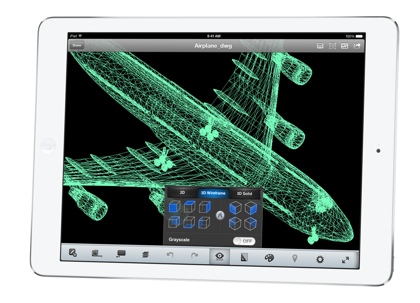Tech
What's right (and wrong) with the iPad Air
The future of the iPad is in the hands of the iPad Air, but does the redesign have what it takes to hold its own against the onslaught of Android tablets?

This week's Apple event threw out a few surprises. While everyone who hasn't been residing under a rock on Mars was expecting a new iPad, what we actually got was a lot different to what was rumored.
What we got wasn't a new iPad, but a new device, called the iPad Air.

(Source: Apple)
Understand that this is a first impressions piece based on the hardware demonstrated by Apple and the published spec of the device. I will update this piece as soon as the hardware is released and add some hands-on thoughts.
What's right with the iPad Air?
- New design: The new design, taking a step away from the chunky bezel, has allowed Apple to shrink the iPad Air while keeping the screen size the same. The dimensions have gone from 241mm by 186mm by 9.4mm to 240mm by 169.5mm by 7.5mm. The weight has also dropped from 662g to 478g for the Wi-Fi plus cellular version, which is the heaviest variant, and from 652g to 469g for the Wi-Fi-only variant. In round terms that makes it 28 percent lighter, 20 percent thinner, and the volume is down 24 percent.
- Smaller tablet, same battery life: Even though the iPad Air is smaller and lighter than its predecessor, the battery still delivers a comparable 10-hour battery life. Apple has achieved this despite the fact that battery capacity has dropped from 43Wh to 32.4Wh.
- A7 processor: Apple has equipped the iPad Air with the same 64-bit A7 processor as is found in the flagship iPhone 5s handset. This is a 1.3GHz dual-core SoC (System-on-a-Chip) that’s based on the ARMv8-A architecture, and features a built-in GPU. According to Apple it is up to twice as fast and has up to twice the graphics power of its predecessor, the A6. Benchmarks show that it beats quad-core offerings from Qualcomm.
- Better Wi-Fi: MIMO technology makes is faster and offers better range. With this download speeds can hit up to 300 Mbps, which is double the data rate of the previous-generation iPad.
- Same pricing structure: The iPad Air will cost you the same as you paid for a comparable iPad.
What's wrong with the iPad Air?
- New form factor means new accessories: Cases, keyboards, sleeves and so on will all need replacing, adding to the overall cost of the upgrade.
- 16GB is still the base storage option: Apple charges $100 for a 16GB storage upgrade to 32GB which costs them about $10. This is why Apple hasn’t added more storage to the base model.
- No Touch ID fingerprint reader: Perhaps Apple is keeping this back for the rumored "iPad Pro."
- No gold finish: Maybe this is another thing that we’ll see on the "iPad Pro."
Bottom line
The iPad Air looks, on paper at any rate, like a solid upgrade of the iPad lineup. It brings with it a fresh look and a cutting-edge processor that will comfortably keep it ahead of the competition.
See also:
- Apple's new Mac Pro revolutionizes the desktop workstation
- New iPad mini: First look, in pictures (gallery)
- iOS 7.0.3 update released for iPhone and iPad
- Apple iPad Air, MacBook event: By the numbers
- Retina MacBook Pros get fourth-gen Intel chip; price drop
- Apple's iPad Air: First look, in pictures (gallery)